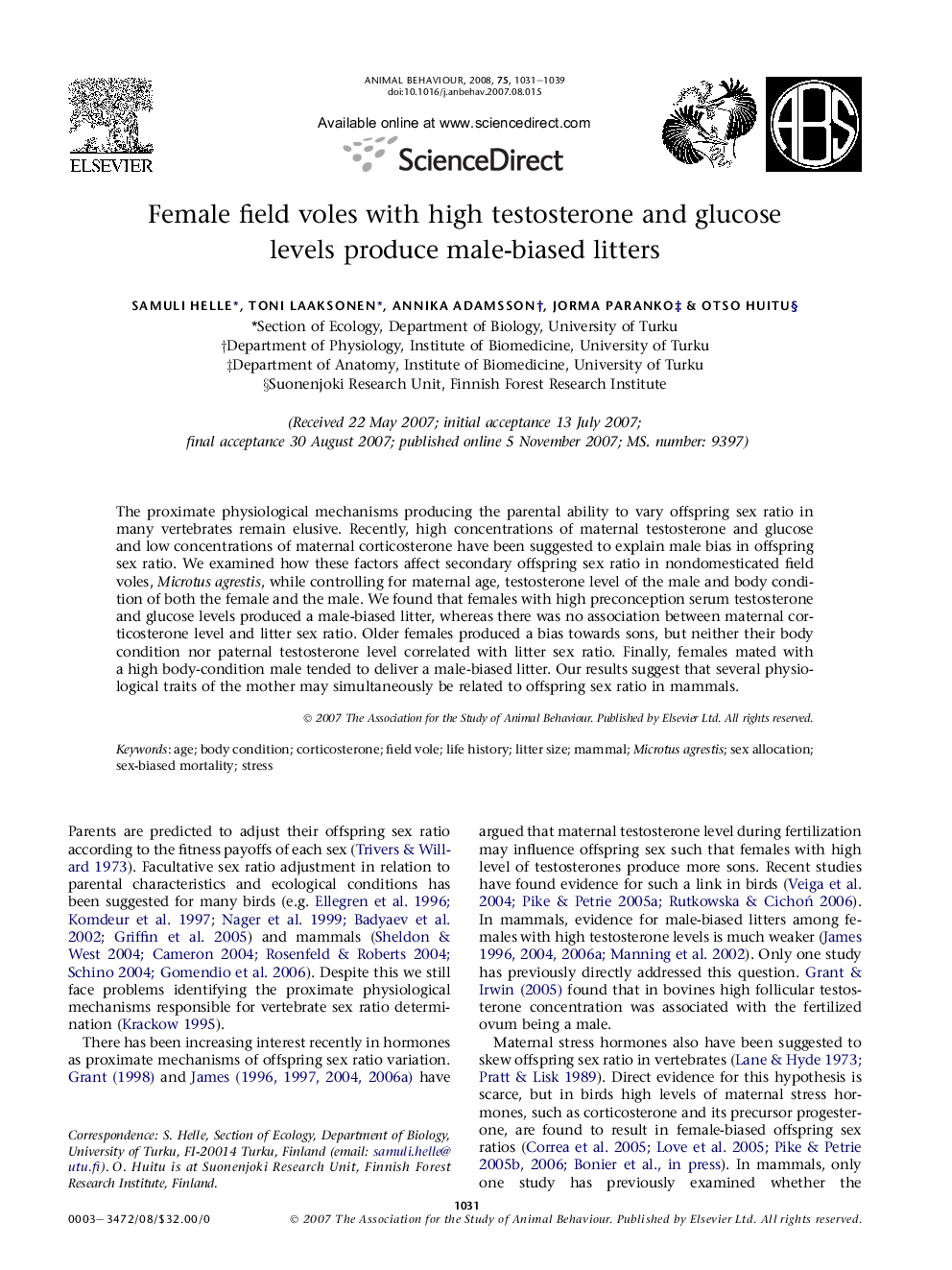| Article ID | Journal | Published Year | Pages | File Type |
|---|---|---|---|---|
| 2418926 | Animal Behaviour | 2008 | 9 Pages |
The proximate physiological mechanisms producing the parental ability to vary offspring sex ratio in many vertebrates remain elusive. Recently, high concentrations of maternal testosterone and glucose and low concentrations of maternal corticosterone have been suggested to explain male bias in offspring sex ratio. We examined how these factors affect secondary offspring sex ratio in nondomesticated field voles, Microtus agrestis, while controlling for maternal age, testosterone level of the male and body condition of both the female and the male. We found that females with high preconception serum testosterone and glucose levels produced a male-biased litter, whereas there was no association between maternal corticosterone level and litter sex ratio. Older females produced a bias towards sons, but neither their body condition nor paternal testosterone level correlated with litter sex ratio. Finally, females mated with a high body-condition male tended to deliver a male-biased litter. Our results suggest that several physiological traits of the mother may simultaneously be related to offspring sex ratio in mammals.
